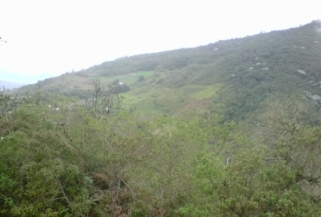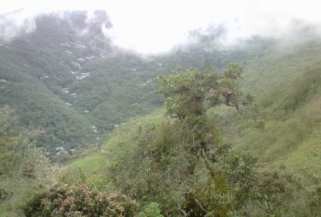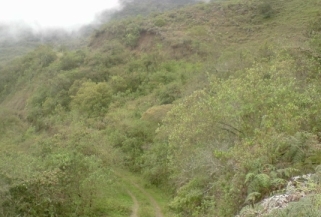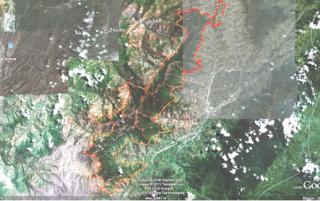





Researcher: Enrique Pacheco Graf
Current affiliation: NURR-Universidad de Los Andes, Centro de Ecología de Boconó, Venezuela
Supervisors:
Collaborators:
Duration: 2012-2017
Funding: FUNDACITE-Trujillo, CDCHTA ULA
The original area covered by tropical montane cloud forest in the Sierra de Trujillo, Venezuela, has been reduced by 73%.
Its remnants, located between 1960 and 2770 m.a.s.l., currently cover an area of ca. 187 km², straddling the water divide between the Motatán and Boconó river basins.
The former experiences a bi-modal rainfall distribution and the latter a modal one.
The runoff produced by this unique eco-hydrosystem consisting of 14 smaller tributary watersheds, represents the water supply for the approximately 126,000 inhabitants of the Boconó, Trujillo and Urdaneta municipalities, including the State's capital with a population of 62,000.
However, based on qualitative analysis and local observations of changes in rainfall distribution and local cloud base levels, it appears that the intensive transformation of the remnant cloud forest's surrounding landscape has generated substantial microclimatic changes, presumably due to changes in surface albedo and aerodynamic roughness.
This could drastically reduce cloud moisture inputs to the forest and so affect the rainfall-runoff ratios of the two basins, and thus stream baseflows, especially during the dry season.
Given the current distribution and degree of fractionation of the remaining cloud forest, its ecohydrological functioning could be severely affected by further changes in land use and climate.
Therefore, assessing the forest's ecohydrological vulnerability and the hydrological impacts of cloud forest conversion to pasture and agricultural use is of vital importance.
A field research project is proposed to this effect covering a complete hydrologic year during which hydro-meteorological observations will be made along two transects covering altitudinal gradients between 920 and 2,980 m.a.s.l, and between 1,350 and 3.120 m.a.s.l. in the Motatán and Boconó basins, respectively.
In addition, age and origin of the system's waters will be determined based upon spatio-temporal sampling of stable isotope content of rain water, cloud water (fog), epiphyte tissue, soil moisture, and streamflow (both during baseflow and stormflow conditions).